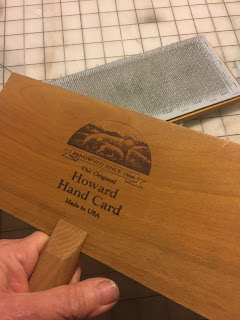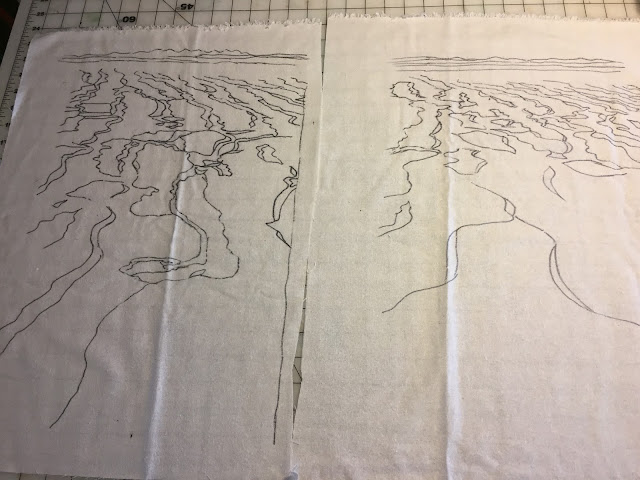Explorations Episode 6: Shirr Am Learning the Hard Way
The only way I ever learn anything is the hard way. Especially with my current art project: trying to make a piece of heavy silk charmeuse look like an undulating wave of sea foam.
OF COURSE it's challenging!
There's a lot of trial and error involved. Here's how one of the errors happened.
The charmeuse had been white, so I painted it in colors that I thought matched the foam in the photo.
I think the colors look pretty close to the ones in the original photo. But the mistake I made, if it was one, is that I also put GAC 900 on the silk charmeuse before I painted it. The GAC 900 was supposed to fill up the interstices in the fabric and prevent the paint from soaking through it and ending up on my work surface.
I also hand-sewed eight lines of large stitches across the width of the silk.
By pulling on the long strings of these stitches, I should be able to gather the silk in parallel gathers, a process known as shirring.
shirr
SHər/
verb
gerund or present participle: shirring
- 1.gather (an area of fabric or part of a garment) by means of drawn or elasticized threads in parallel rows."a swimsuit with a shirred front"
I shirr am learning the hard way here.
I pulled the gathering stitches but the result of the combination of the painting and the GAC made the silk much less pliable.
If I use this technique in the final product, I'll manipulate the gathers, spread out the fabric within the folds, sew on beads, and add hand embroidery and machine stitching, all of which will flatten it out somewhat. And the dimensionality of the texture is an issue because this quilt MAY have to be stored in a roll, whenever it's not hanging on the wall at the New England Quilt Museum, which is its ultimate destination. The flatter it is, the easier it will be to roll, and the less likely it will be negatively affected by the rolling. So it's in my interest to make it flat.
The GAC made it so stiff it wouldn't be easy to manipulate or easy to roll. So I decided to see what the fabric felt like if I put on the paint without the GAC:
It was a little stiff, but not as rubbery, so I decided to ditch the GAC.
On my second attempt to recreate this band of foam, I applied the paint without the GAC:
In this second attempt, I won't be shirring the silk charmeuse. Instead, I'll be using this special stuff called Fabric Magic a steam activated shrinking interfacing:
What I'm going to do is layer the painted silk with a same-size piece of Fabric Magic. Then I'll sew lines parallel to the undulant edge of the foam. Once those lines are sewn, when the Fabric Magic is exposed to steam, like from an iron, the silk will pucker along the sewn lines. And maybe it will look like the foam in the photo. I had to cut the silk 30 percent larger for this reason.
That's my next trial in this trial and error process. Shirr am learning the hard way.




















































